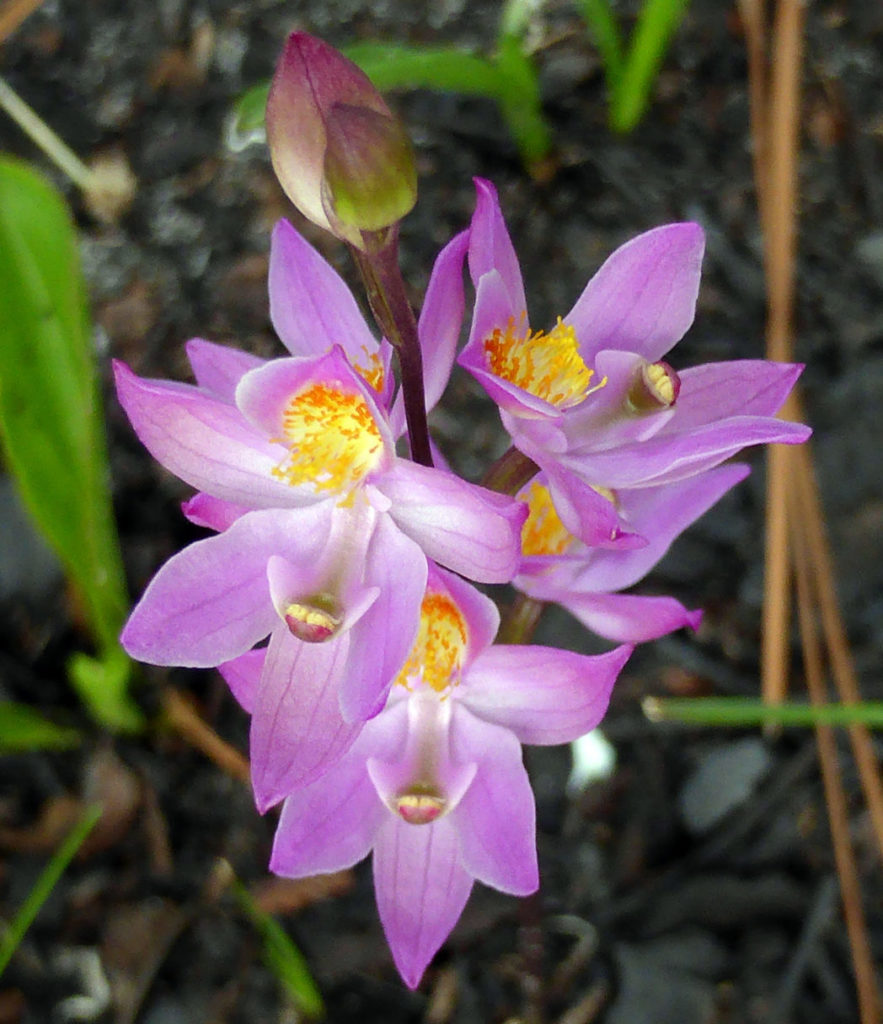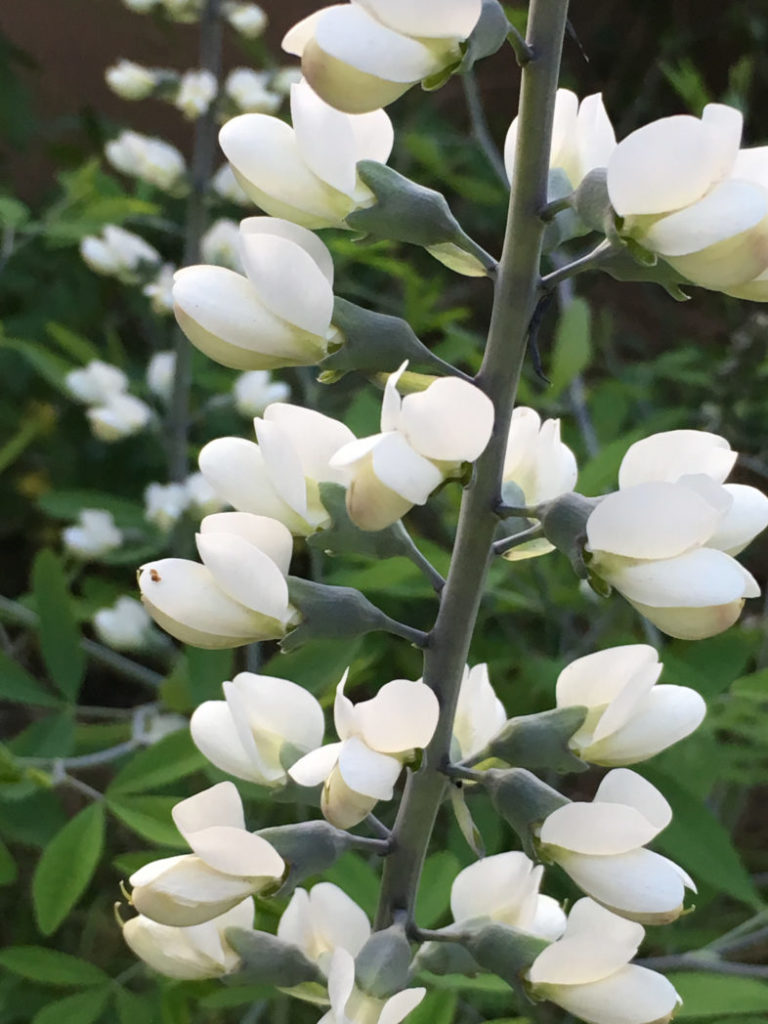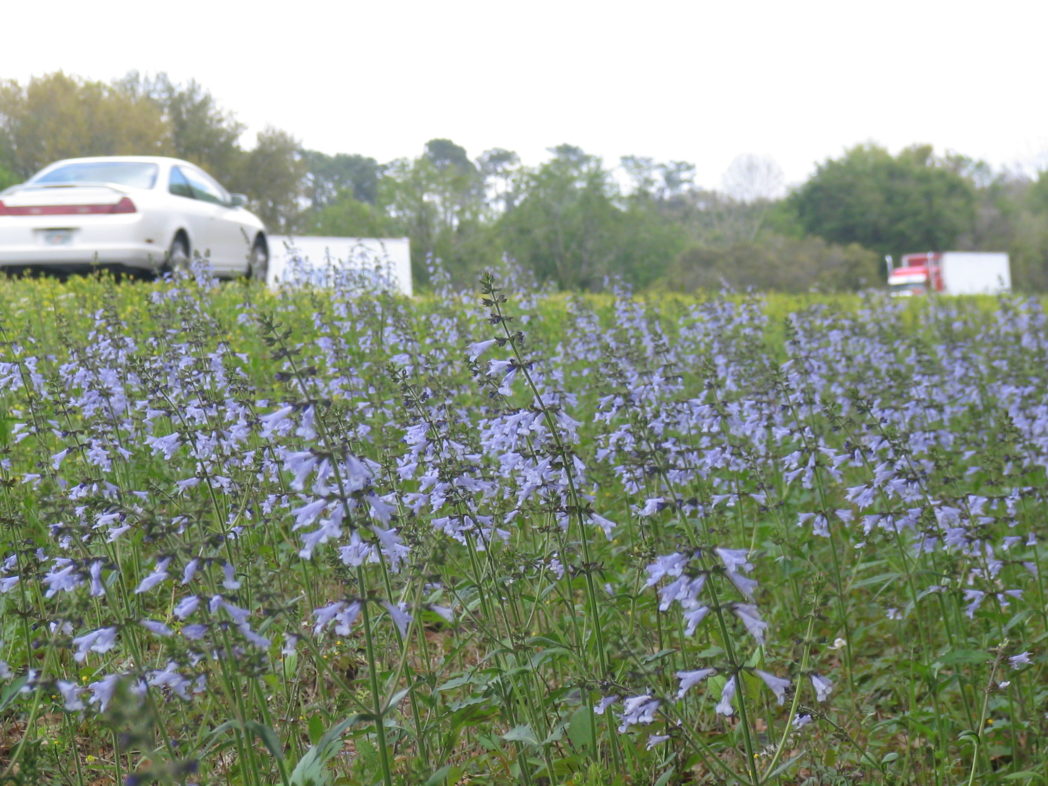Bloom Report: Banner bloom ahead for Florida’s spring wildflowers
Pictured above: Lyreleaf sage (Salvia lyrata) on a Panhandle roadside. Photo by Jeff Norcini
It looks like a banner bloom ahead for Florida’s spring wildflowers, thanks to our relatively warm and wet winter months. Here’s a look at what’s happening across the state. See the Florida Wildflower Foundation’s What’s in Bloom page for more blossoms and instructions on how to submit your own spring wildflower photos.
Panhandle and North Florida: As spring begins in North Florida and the Panhandle area, wildflowers are beginning to make their appearances in abundance. Some of the most common species you’ll see on roadsides include the blue Lyreleaf sage (Salvia lyrata), yellow Lanceleaf tickseed (Coreopsis lanceolata), and drifts of white Daisy fleabane (Erigeron spp.).
In the Apalachicola National Forest, drive County Road 375 (Smith Creek Road) from SR 20 in Leon County to Sopchoppy in Wakulla County to see stately purple lady lupine in sandy soil and a variety of carnivorous plants — such as the Parrot pitcherplant (Sarracenia psittacina)— in wet areas. You’ll also find such beauties as grasspink orchids (Calopogon spp.). In the forest on State Road 65, you can see another of the carnivorous plants, the beautiful rose or gulf purple pitcherplant (Sarracenia rosea), one of the first of the carnivorous plants to bloom. State parks also have wonderful flowers to see. Try Torreya State Park, where the striking Indianpink (Spigelia marilandica) blooms near the visitor parking lot, and Florida Caverns State Park, which hosts abundant Columbine (Aquilegia canadensis). For more of what’s blooming in the Panhandle and suggested viewing routes, see www.flawildflowertrips.org.

North and North Central Florida: Unseasonal warmth had wildflowers usually seen in March popping blooms in February, like the white star of Bethlehem, which forms mat-like colonies in lightly shaded to open areas. Low-growing blue-eyed grass (Sisyrinchium spp.) is also putting on a show, lending a low-growing haze of blue flowers to roadsides. Spiderwort (Tradescantia sp.) also is coming on strong. Look for it along such roads as the Beachline (SR 528) and Interstates 4, 75 and 95, and along rural roads, along with such favorites as Lyreleaf sage and Oakleaf fleabane (Erigeron quercifolius).
Tropical sage (Salvia coccinea), Leavenworth’s tickseed (Coreopsis leavenworthii) and Lanceleaf tickseed are well into their blooms, while Dune sunflower (Helianthus debilis) rules coastal sands. Along sandy trails, keep a lookout for Pricklypear cactus (Opuntia humifusa), which is just budding in many areas and will soon be crowned with beautiful yellow blossoms. And don’t forget the omnipresent Spanish needles (Bidens alba). A favorite of pollinators, its white and yellow blossoms can be seen about everywhere, especially on roadsides. Another spring favorite, Carolina jessamine (Gelsemium sempervirens), can been seen trailing on the ground and hanging from trees and fences. The plant’s yellow trumpet-like flowers are a favorite of bees.
On rural roads, look for red Coralbean (Erythrina herbacea) and the tall, white plumes of White wild indigo (Baptisia alba) along fencerows. If you’re lucky, you might also spot the white flag-like flowers of pawpaw (Asimina spp.) in open fields and in natural areas, such as the Ocala National Forest’s restored sandhills. Two species seen are Narrowleaf pawpaw (Asimina angustifolia) and Flag pawpaw (Asimina obovata). Another white wildflower, Pricklypoppy (Argemone albiflora), is easy to identify: it is 3- to 4-feet high and has prickly dark green leaves and bright white, 3-inch blooms resembling poppies.
Other great spring wildflowers to look for are the blue spikes of lyreleaf sage, the daisy-like yellow flowers of false dandelion, and Hastateleaf dock (Rumex hastatulus), which creates beautiful rusty-colored meadows in open fields. Another eye-catcher is Purple thistle (Cirsium horridulum), with its large serrated leaves. All parts of the plant have spines, which makes it unpopular.
In wet areas, look for Blue flag iris (Iris virginica), which makes a great garden addition (as do many of the plants named here). Atamasco lilies (Zephyranthes atamasca) also like dampness, blooming around Easter, especially after rain — which is why they’re also known as rain lilies.

South Florida: It’s this region’s natural areas that steal the wildflower show in spring. “We did have a wetter than normal year, but the good news is that there were some areas in Jonathan Dickinson and at CREW Marsh that burned the previous season,” says Roger Hammer, Florida wildflower expert and author. Burns open space and provide nutrients — things that many wildflower species thrive upon. Because of that, they’re usually good places to see blooms in the seasons immediately following fire.
Recent sightings at Martin County’s Jonathan Dickinson State Park’s wet/damp areas and prairies include Manyflowered grasspink orchid (Calopogon multiflorus) (pictured above), the hatpin-like Tenangle pipewort (Eriocaulon decangulare), tiny fringed Yellow star grass (Hypoxis juncea), Blue flag iris, and the small drumheads of Orange milkwort (Polygala lutea), as well as Wand goldenrod (Solidago stricta) and Yellow-eyed grass (Xyris sp.). At CREW Marsh in Collier County, look for water-loving blue Water hyssop (Bacopa caroliniana), Leavenworth’s tickseed, lavender-colored Bay lobelia (Lobelia feayana), Rose-of-Plymouth (Sabatia stellaris) and Yellow hatpins (Syngonanthus flavidulus). In dry areas, look for the blue blossoms of Wild pennyroyal (Piloblephis rigida) and Whitemouth dayflower (Commelina erecta).
Everglades National Park is hopping with color, too. Beauties there include the threatened Pine pink orchid (Bletia purpurea), elegant bouquets of white String-lily (Crinum americana), and the butter-yellow blooms of Coastalplain hawkweed (Hieracium megacephalon). Bulltongue arrowhead (Sagittaria lancifolia) thrive in wet locations, as do the delicate white spires of spring Ladies’ tresses (Spiranthes vernalis). In drier areas, look for the diminutive white-rose knobs of capeweed blossoms, white clusters of Oakleaf fleabane, and the blue-purple blossoms of Thickleaf wild petunia (Ruellia succulenta), which is found nowhere else in the world but South Florida.
Need a Florida wildflower field guide? Visit our Learn page for suggested field guides and other references.

